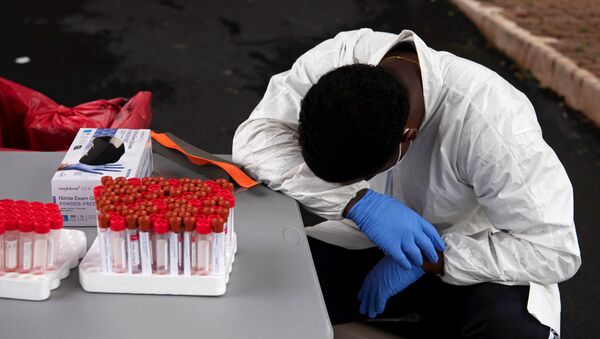More specifically, the model forecasts 208,255 COVID-19 deaths by November 1. However, the model also predicts the death toll would only reach 162,808 by November if 95% of people wore masks in public.
"We can now see the projected trajectory of the epidemic into the fall, and many states are expected to experience significant increases in cases and deaths in September and October," IHME Director Dr. Christopher Murray said in a Tuesday news release.
"However, as we all have come to recognize, wearing masks can substantially reduce transmission of the virus. Mask mandates delay the need for re-imposing closures of businesses and have huge economic benefits. Moreover, those who refuse masks are putting their lives, their families, their friends, and their communities at risk."
The model also assumes that most schools will reopen in the fall and that social distancing restrictions and lockdown measures would be reimposed in states where deaths per day “reach a level of 8 per one million people,” the news release notes. Both Florida and Massachusetts are expected to reach that rate by November 1.
The IHME also warns that the projected death toll may increase if the illness spreads among “at-risk populations.” The most recent data suggests that more cases are being detected in younger people, who are at less risk of dying from the disease than their older counterparts.
In addition, the model forecasts a spike in deaths in many states in mid- to late September due to the “expected seasonality of COVID-19.” The assumption is based on a “strong statistical relationship between COVID-19 transmission and pneumonia seasonality,” the news release explains.
"The US didn't experience a true end to the first wave of the pandemic," Murray said. "This will not spare us from a second surge in the fall, which will hit particularly hard in states currently seeing high levels of infections."
COVID-19 cases have been surging in many US states in the last month, particularly in the South and Southeast regions of the nation. In fact, 32 states are reporting higher numbers of new cases this week compared to last week, according to data by Johns Hopkins University.
In an open letter published on July 6, the World Health Organization warned that there is emerging evidence that small respiratory particles called microdroplets that hang in the air can transmit SARS-CoV-2, the coronavirus that causes COVID-19.
Up until now, researchers have believed that COVID-19 is mostly spread by large respiratory droplets. If the airborne transmission of the disease is possible, masks may need to be worn indoors, and health care workers in contact with COVID-19 patients would most certainly require N95 masks that can filter out such microdroplets.
"We are still knee-deep in the first wave of this," Dr. Anthony Fauci, director of the US National Institute of Allergy and Infectious Diseases, warned in a livestreamed Monday interview with Francis Collins, the director of the National Institutes of Health. "I would say, this would not be considered a wave. It was a surge, or a resurgence of infections superimposed upon a baseline ... that really never got down to where we wanted to go."




